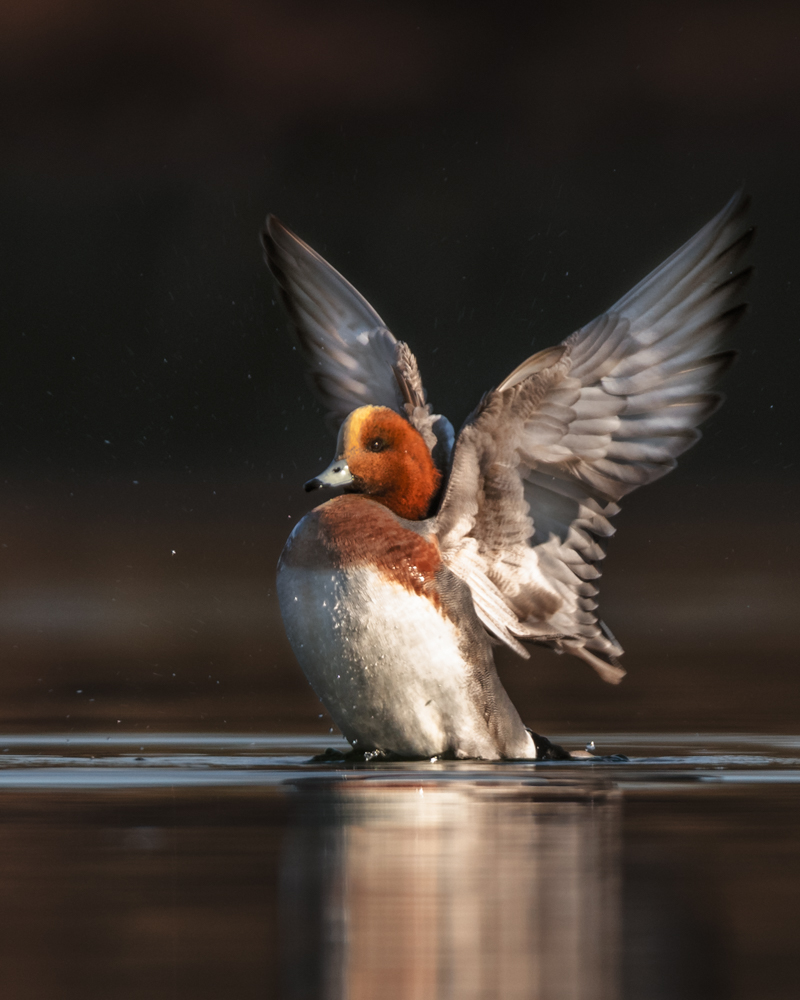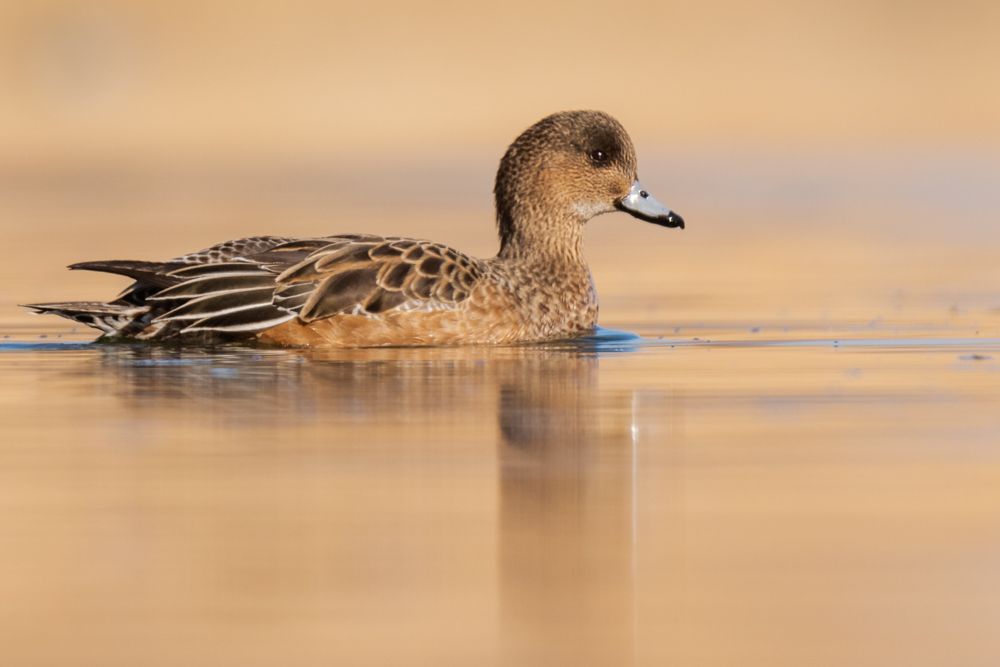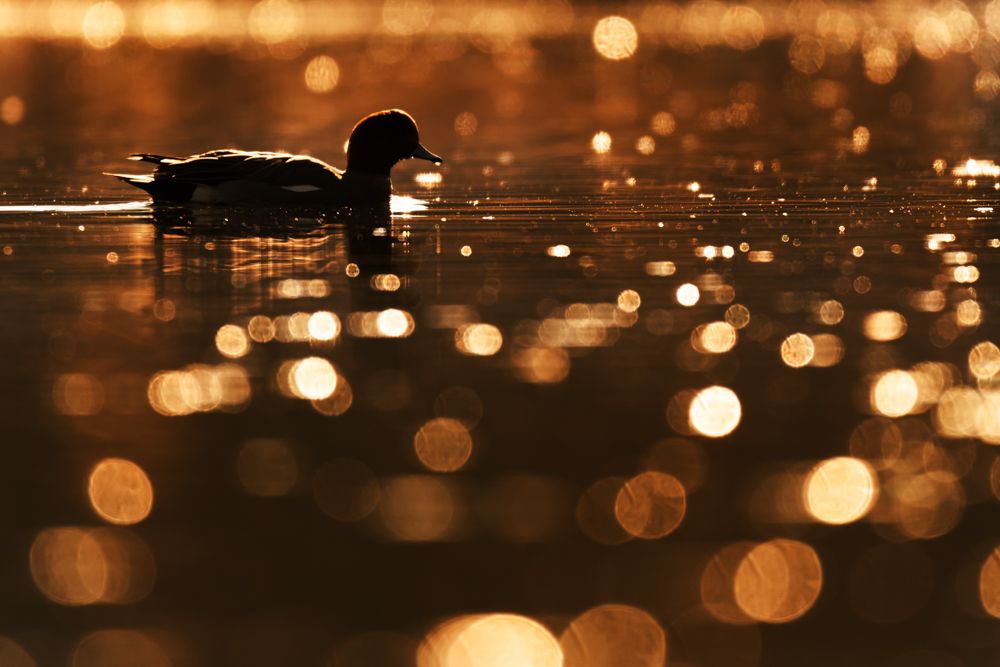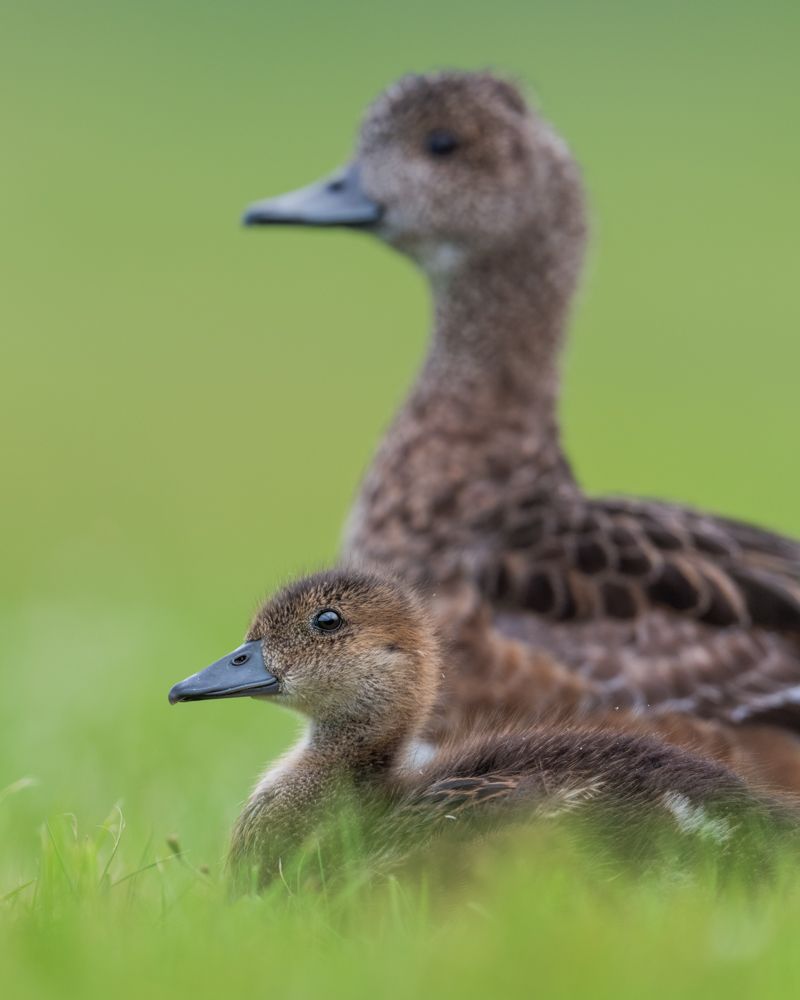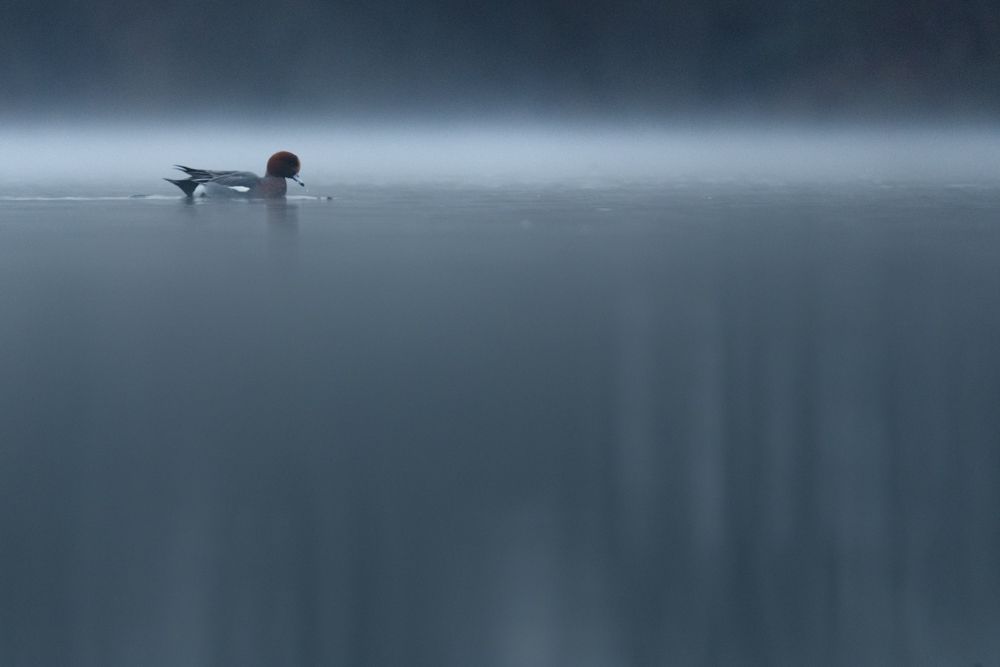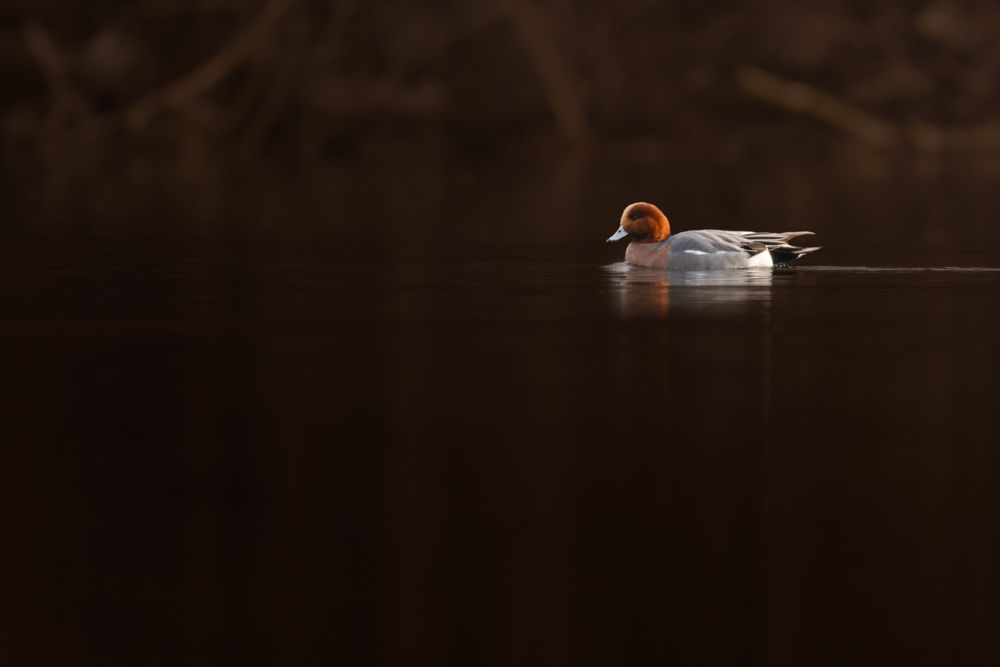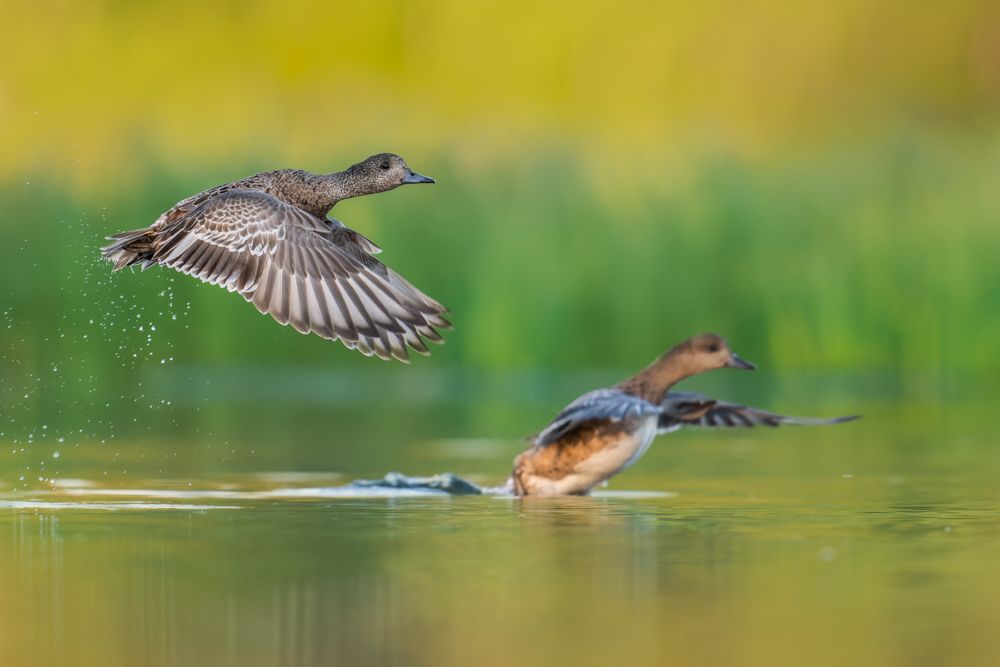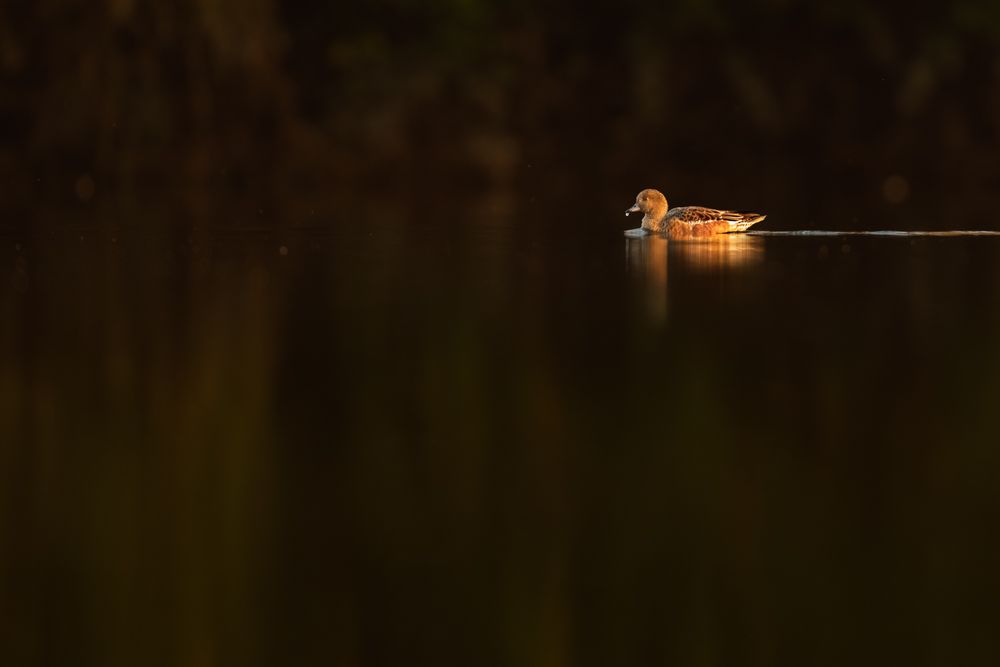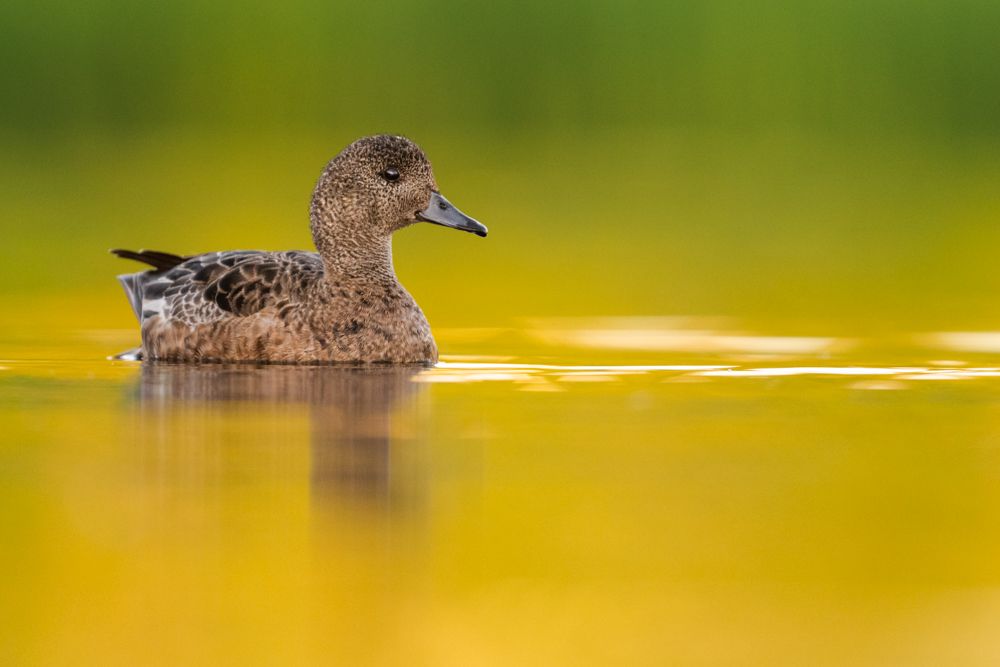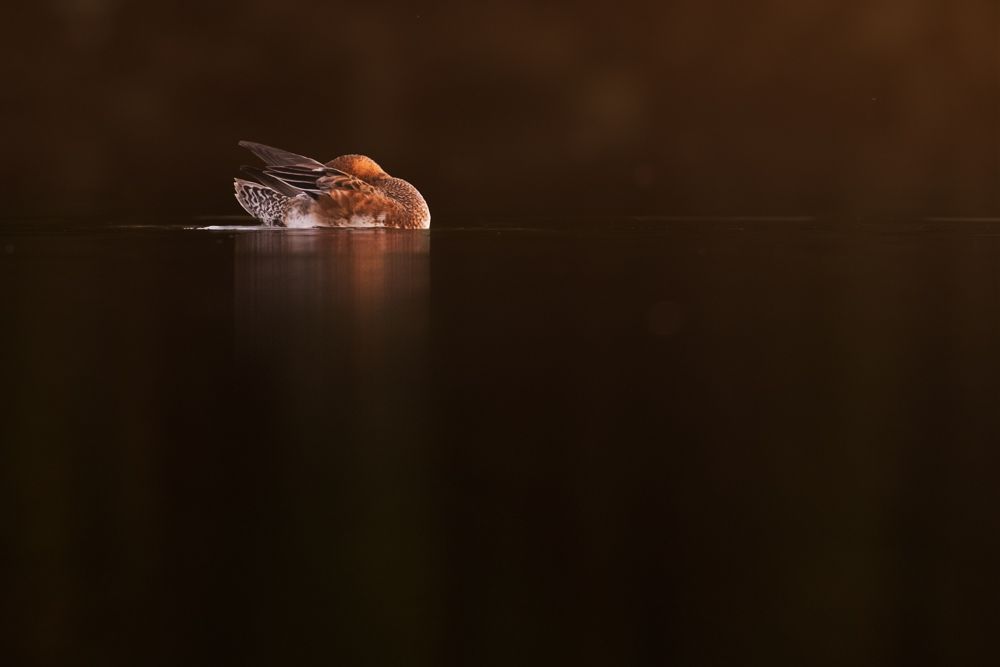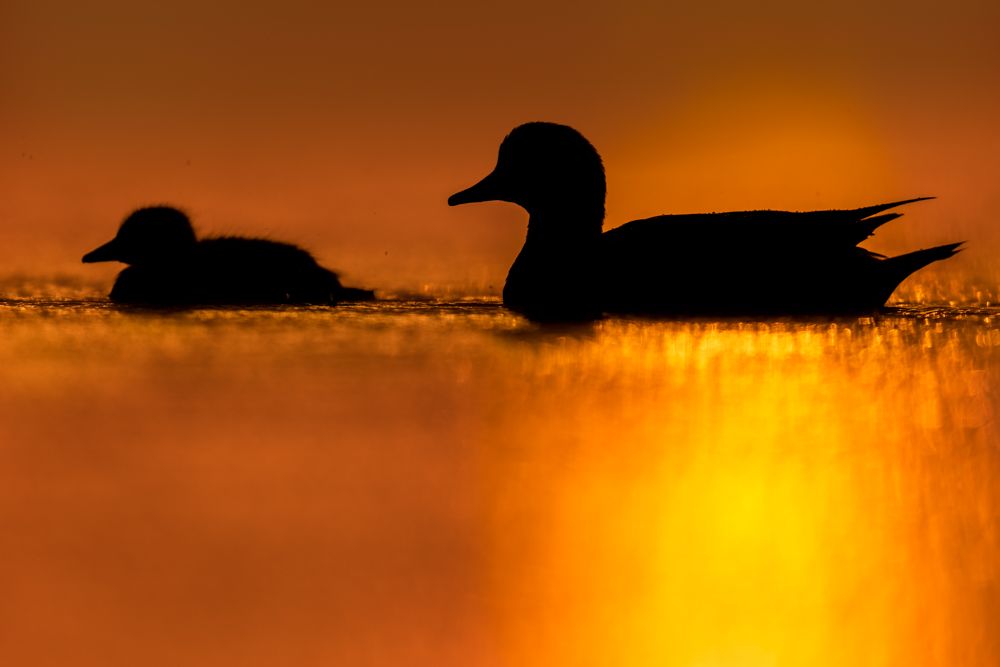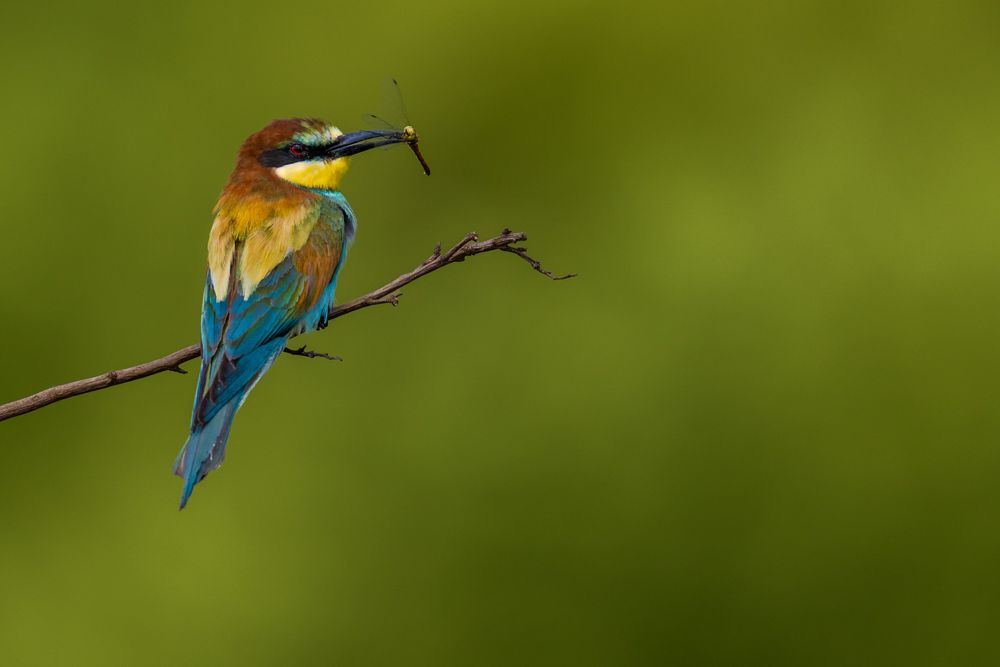Eurasian wigeon (Mareca penelope)
Profile
Scientific name: Mareca penelope
Class: Birds
Order: Anseriformes
Family: Anatidae
Length: 45-51cm
wingspan: 75-86cm
Weight: 500-900g
Distribution: Northern Palaearctic
Breeding population CH: does not breed in Switzerland
Habitat: Various lakes, slow-flowing waters
Migration behaviour: Short to long-distance migrant
Appearance & Identification
The male wigeon has a rusty brown head with a bright yellow crown. The head feathers can shimmer slightly greenish depending on the light. The chest is slightly pink while the back and sides are finely grey patterned. The males have a white thigh area in front of the black rump. Similar to the common teal, the male wigeon also has a horizontal white stripe over the sides.
During the summer, the male moults into an eclipse plumage. Because this plumage is rather rare to observe in Switzerland, I will not describe this plumage in detail. In general it’s very similar to the female's plumage. The eclipse plumage of the male is a little bit more coloured.
The female of the wigeon has a much finer pattern on the head than other female dabbling ducks. The sides are brown and largely unpatterned. The wing feathers are relatively long and extend beyond the body. Both males and females have a light grey beak with a black nail (tip of the beak).
Risk of confusion
Both males and females are hardly confusable. Compared to other female dabbling ducks, the female is quite easy to identify.
Habitat
The wigeon breeds on waters in the boreal coniferous forest zone. In winter, it is mainly found on rather shallow shores and in fields near canals or larger bodies of water.
Distribution in Switzerland
In Switzerland, the wigeon is only present in winter. It spends the summer further north. The winter population in Switzerland is 3'000 to 4'000 individuals large. This number has been rising continuously since the 80s. One reason for this may be the appearance of two newly occurring water plants.
Diet
The food of the wigeon consists of water and land plants. These are eaten either by dabbling or grazing on land. The wigeon also likes to steal the water plants that coots have brought to the surface. The wigeon belongs to the dabbling duck family and cannot dive itself.
Breeding behaviour
Like with all ducks, the females of the wigeon take care of the brood alone. The males form flocks among themselves and migrate to moulting places.
The female builds a nest in the dense shore vegetation. She then lays 8 to 9 eggs in this nest. After 24 days the young hatch. Under the guidance of their mother, they leave the nest shortly after hatching and have to look for food themselves. After another 40 to 45 days the young wigeon reach flight ability.
Migration behaviour
Most wigeons belong to the short-distance migrants. However, some individuals migrate over 6’000 km and are therefore counted among the long-distance migrants. Long-distance migrants are species that migrate further than 4’000 km from their breeding grounds to their wintering grounds.
Photographing the wigeon
Like most dabbling ducks (except the mallard), wigeons are rather shy. Photographing the wigeon requires a lot of patience and in most cases some sort of camouflage. The wigeon is quite common especially at Lake Constance and in the Fanel. But because the wigeon avoids the proximity to humans, the duck is a rather difficult species to photograph.
Other species
Resources
The population figures, length, weight and wingspan correspond to the data of the Vogelwarte Sempach
Information on behaviour, distribution etc. is based on my own observations and was supplemented with information from the following sources:
The Birds of Switzerland (2007) Lionel Maumary et al.
Swiss Breeding Bird Atlas 2013-2016
The Cosmos Bird Guide (2017) Lars Svensson et al.


